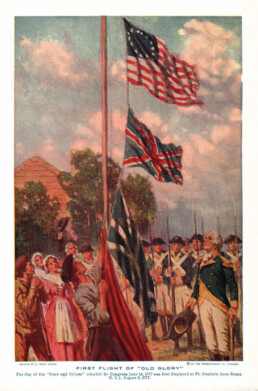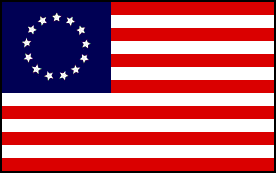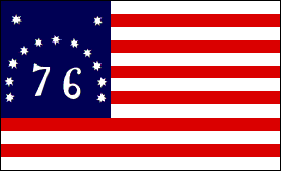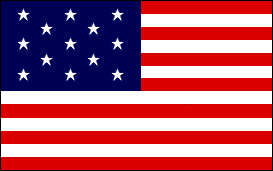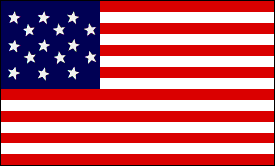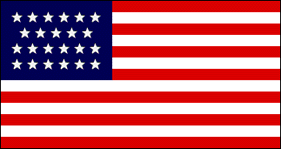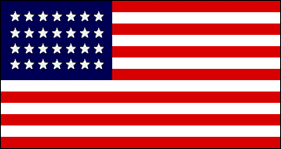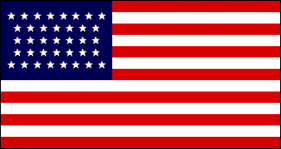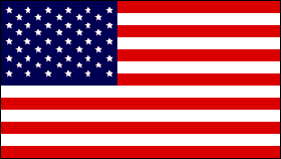All About Flag Day
History and Meaning of this National Holiday
Flag Day is a holiday in the United States that celebrates the adoption of the national flag. The day also honors the principles of freedom, unity, and patriotism. Discover the holiday’s history, meaning, and interesting facts about the American flag. For instance, the stars on the flag represent the 50 states, and the stripes signify the original thirteen colonies. The colors have meaning as well. Red symbolizes hardiness and valor, White symbolizes purity and innocence, and Blue represents vigilance, perseverance, and justice.
Make sure to also see our educational resources here:

Old Glory shining bright! United in red, white, and blue.
Origins & History of Flag Day
The origins of Flag Day can be traced back to the late 19th century. The idea of establishing a day to honor the flag gained prominence through the efforts of several individuals and organizations. Despite the adoption of the flag in 1777, it took a considerable amount of time before official observances of Flag Day began.
One of the earliest advocates for a national flag day was a schoolteacher named Bernard J. Cigrand. In 1885, Cigrand held the first recognized observance of Flag Day in his classroom in Waubeka, Wisconsin, where he assigned essays to his students about the flag’s significance. As time went on, Cigrand’s efforts garnered support, and he traveled around the country delivering speeches to promote the idea of a national Flag Day. His dedication has earned him the distinction of being the “Father of Flag Day” by many.
While several claims exist regarding the first recognized celebration, the most notable claim originates from New York. On June 14, 1889, Professor George Bolch, the principal of a free kindergarten for underprivileged children in New York City, arranged patriotic ceremonies to commemorate the anniversary of the Flag Day resolution. This initiative caught the attention of the State Department of Education, which subsequently ensured that Flag Day was observed in all public schools.
Philadelphia also presents another claim in the history of Flag Day. In 1893, the Society of Colonial Dames achieved the passage of a resolution mandating the display of the flag on all public buildings in the city. Elizabeth Duane Gillespie, who was both a direct descendant of Benjamin Franklin and the president of the Colonial Dames of Pennsylvania, made an attempt that same year to designate June 14 as Flag Day in Philadelphia. Unfortunately, this was not given much attention at the time but contributed to the movement.
In the following years, various local and state celebrations of Flag Day took place across the country. However, it wasn’t until May 30, 1916, that President Woodrow Wilson issued a proclamation establishing June 14 as National Flag Day. The proclamation encouraged all Americans to display the flag on that day and called for patriotic observances.
Finally, on August 3, 1949, National Flag Day was officially recognized by an Act of Congress signed into law by President Harry S. Truman. This legislation established Flag Day as a nationwide observance, encouraging all citizens to display the flag and organizing appropriate ceremonies.
Today, Flag Day is observed throughout the United States. It serves as an occasion to honor the history, significance, and symbolism of the American flag as a symbol of freedom, unity, and national pride. Many communities organize parades, flag-raising ceremonies, and patriotic events to commemorate the day.
Old Glory
Where did the nickname "Old Glory" come from?
The flag’s association with the name “Old Glory” is credited to Captain William Driver, a sea captain from Massachusetts. According to the story, Captain Driver, who was a staunch Unionist during the American Civil War, received a 24-star flag as a gift from his mother in 1824. He affectionately named the flag “Old Glory” and flew it from his ship.
During the Civil War, Driver hid the flag to protect it from Confederate forces. When Captain Driver returned from the sea, he proudly displayed Old Glory on patriotic days outside his home in Nashville. After the war, he carried Old Glory to the Tennessee state capitol building where it flew for years and gained recognition.
Through the efforts of Captain Driver, the term Old Glory became synonymous with the American flag. Today, the nickname “Old Glory” is sometimes used to refer to the flag as a symbol of national pride and heritage.
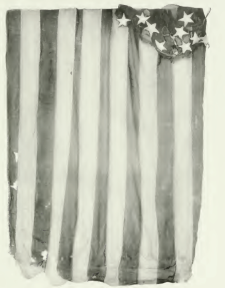
The original “Old Glory” owned by sea captain William Driver.
Credit: Homer Hoyt – Harlan Hoyt Horner. 1910. The American Flag. New York: State Education Department. Source: Wikipedia
Learn more, including how to fold the flag here:
History of the US Flag
The history of the United States flag, commonly referred to as the “Stars and Stripes” or “Old Glory,” is intertwined with the nation’s founding and development.
The first flag resembling the modern stars and stripes was called the “Grand Union Flag” which appeared in late 1775. It had 13 red-and-white stripes like our modern US flag but with the Union Jack in the upper left-hand corner.
Upon independence, the first official flag of the United States, often referred to as the “Betsy Ross flag,” was adopted by the Continental Congress on June 14, 1777. It featured thirteen alternating red and white stripes representing the original thirteen colonies, along with a blue canton in the upper left corner bearing thirteen white stars. It was originally designed by Congressman Francis Hopkinson who signed the Declaration of Independence.
As the country expanded and admitted new states, the design of the flag evolved. In 1795, two additional stars and stripes were added to represent Vermont and Kentucky, bringing the total to 15. However, it soon became clear that adding a stripe for each new state would make the flag too unwieldy, so in 1818, Congress passed an act returning the flag to thirteen stripes to represent the original colonies and adding a star for each state.
The flag underwent changes as the country grew, with stars continually added to represent new states. During the 1950s, as Alaska’s admission to the Union became imminent, the American flag underwent modifications to incorporate a 49th star alongside the existing 48 stars. Simultaneously, a young Ohio student named Bob Heft, aged 17, utilized his mother’s sewing machine to dismantle his family’s 48-star flag and skillfully stitched 50 stars in a proportionate arrangement. He submitted his creation to his history teacher as part of a class project, expressing his belief that Hawaii would soon attain statehood as well. Bob received a B- for the project.
Heft took an extra step by sending the flag to his congressman, Walter Moeller, who later presented it to President Eisenhower once both new states became part of the Union. Eisenhower was impressed with Heft’s design, and on July 4, 1960, the president and the high school student stood together as the 50-star flag was proudly hoisted for the very first time. In recognition of Heft’s exceptional effort, his teacher promptly revised his grade from a B- to an A!
The flag holds immense significance for Americans, representing our unity, freedom, and shared history. It is a cherished national symbol, and its display is encouraged on various occasions including Flag Day, Independence Day, Memorial Day, Veterans Day, and other patriotic celebrations.
Credit: 1914. First flight of “Old Glory”. Artist Unknown. Editors: Chandler B. Beach & Frank Morton McMurry. The New Student’s Reference Work. Wikimedia
Keep in Touch!
Get notified whenever we publish new materials and receive alerts of resources for upcoming patriotic holidays and events.



